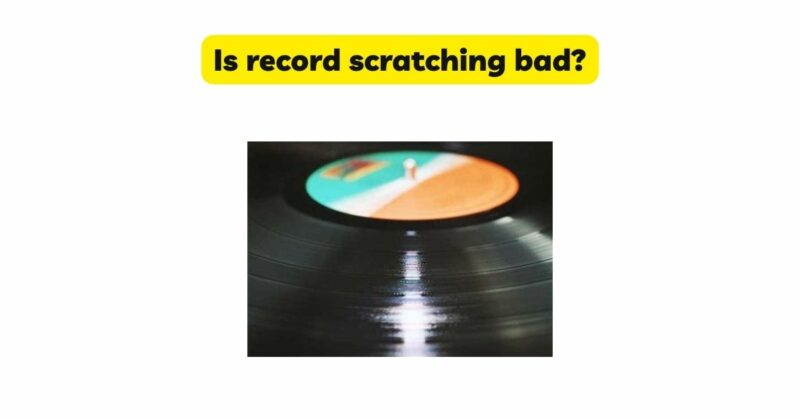Record scratching is an integral part of DJ culture and has revolutionized the art of music mixing and performance. However, misconceptions persist regarding the potential harm caused by record scratching. In this article, we will delve into the topic of record scratching, examining its history, techniques, and impact on vinyl records. By debunking common myths and providing an understanding of the art form, we aim to shed light on the true nature of record scratching and its relationship with vinyl preservation.
I. The Origins and Evolution of Record Scratching
- DJ Techniques: Record scratching emerged in the 1970s as DJs began experimenting with vinyl manipulation, creating rhythmic and percussive effects by manually moving the record back and forth.
- Turntable Technology: Technological advancements in turntables and the introduction of features like the direct-drive mechanism and adjustable tonearms contributed to the development of scratching techniques.
- Musical Expression: DJs adopted record scratching as a creative tool to add unique and dynamic elements to their performances, pushing the boundaries of music production and live mixing.
II. Debunking the Myths Surrounding Record Scratching
- Record Damage: The notion that record scratching universally damages vinyl records is a misconception. Scratching itself does not inherently harm records; it is the improper technique or excessive force that can cause damage.
- Stylus Wear: While record scratching involves the stylus making direct contact with the grooves, when performed correctly, the wear on the stylus is minimal. Modern DJ cartridges are designed to withstand the rigors of scratching without significant damage.
- Groove Damage: Properly executed scratching involves controlled movements within a small section of the record, minimizing the risk of long-term groove damage. However, excessive or aggressive scratching, especially with worn or damaged needles, can lead to groove distortion.
III. The Impact of Record Scratching on Vinyl Records
- Surface Noise: Scratching introduces surface noise, characterized by clicks, pops, and hisses. While this noise is an inherent part of scratching, it does not necessarily indicate damage to the record itself.
- Groove Wear: Intense and prolonged scratching sessions, particularly with worn or low-quality needles, can lead to increased groove wear over time. This wear may result in reduced audio fidelity and increased surface noise during playback.
- Maintenance and Care: Regular cleaning, proper needle alignment, and the use of quality cartridges and styli can mitigate the potential negative effects of scratching on vinyl records. These maintenance practices help preserve the record’s condition and ensure optimal playback performance.
IV. Preserving Vinyl Records while Scratching
- Needle and Cartridge Maintenance: Regularly inspect and clean the stylus to remove dirt and debris that can cause groove damage. Replace worn or damaged styli to maintain optimal performance.
- Record Selection: Avoid using valuable or rare records for scratching sessions. Opt for well-maintained, easily replaceable records to minimize the risk of damage.
- Technique and Control: Develop proper scratching techniques and exercise control over the pressure applied to the record. Use light and precise movements to minimize unnecessary wear and reduce the risk of groove distortion.
- Backup Copies: Create digital backups or duplicate copies of prized vinyl records to preserve their original condition and reduce the need for frequent scratching.
V. Conclusion
Record scratching, when performed with care and respect for the vinyl medium, can be a creative and expressive art form. By debunking the myths surrounding record scratching and understanding its impact, enthusiasts can engage in the practice while maintaining the integrity of their vinyl collections. With proper maintenance, technique, and record selection, DJs can embrace the art of scratching without compromising the longevity and quality of their beloved vinyl records. It is through a combination of skill, knowledge, and respect for the medium that record scratching can continue to be celebrated as an exciting element of DJ culture.


